| Source (Hebrew) | Translation (Chinese) |
|---|---|
אֵל אָדוֹן עַל כָּל־הַמַּעֲשִׂים בָּרוּךְ וּמְבֹרָךְ בְּפִי כָל־נְשָׁמָה גָּדְלוֹ וְטוּבוֹ מָלֵא עוֹלָם דַּעַת וּתְבוּנָה סוֹבֲבִים אוֹתוֹ |
上帝,是万事(行动)之主, 是圣尊,每个灵魂的嘴都祝福祂, 祂的伟大和善良遍布世界, 祂的知识和洞察力随处可见。 |
הַמִּתְגָּאֶה עַל חַיּוֹת הַקֹּדֶשׁ וְנֶהְדָּר בְּכָבוֹד עַל הַמֶּרְכָּבָה זְכוּת וּמִישׁוֹר לִפְנֵי כִסְאוֹ חֶסֶד וְרַחֲמִים לִפְנֵי כְבוֹדוֹ |
尊贵的神 立于神圣的Chayot天使上方, (天堂)战车上方是(祂)神奇的荣耀, 从祂的宝座中传出价值和公平, 从祂的荣耀中传出仁慈和怜悯。 |
טוֹבִים מְאוֹרוֹת שֶׁבָּרָא אֱלֹהֵינוּ יְצָרָם בְּדַעַת בְּבִינָה וּבְהַשְׂכֵּל כֹּחַ וּגְבוּרָה נָתַן בָּהֶם לִהְיוֹת מוֹשְׁלִים בְּקֶרֶב תֵּבֵל |
我们的神创造的发光体是良善的, 祂凭借着知识、理解 和智慧进行创造, 祂给予发光体以力量和能力, (让)他们 在世界尽情展现。 |
מְלֵאִים זִיו וּמְפִיקִים נוֹגַהּ נָאֶה זִיוָם בְּכָל־הָעוֹלָם שְׂמֵחִים בְּצֵאתָם וְשָׂשִׂים בְּבוֹאָם עוֹשִׂים בְּאֵימָה רְצוֹן קוֹנָם |
他们充满光泽和光亮, 美丽的光芒照耀全世界, 他们出发时很快乐,归来时很高兴, 他们满怀着敬畏 按照创造者的意志行事。 |
פְּאֵר וְכָבוֹד נוֹתְנִים לִשְׁמוֹ צָהֳלָה וְרִנָּה לְזֵכֶר מַלְכוּתוֹ קָרָא לַשֶּׁמֶשׁ וַיִּזְרַח אוֹר רָאָה וְהִתְקִין צוּרַת הַלְּבָנָה |
他们给祂的名增添光辉和荣耀, (他们满怀)欢乐歌颂 祂的王国, 祂呼唤太阳,太阳便释放(它的)光芒, 祂观察并绘制月亮(白色)的形状(月相)。 |
שֶׁבַח נוֹתְנִים לוֹ כָּל־צְבָא מָרוֹם תִּפְאֶרֶת וּגְדֻלָּה שְׂרָפִים וְאוֹפַנִּים וְחַיּוֹת הַקֹּדֶשׁ׃ |
所有天上的(天使)军团极力地赞美祂。 炽天使、座天使和圣洁的Chayot天使将光辉与伟大(赐予祂)。 |
This Chinese translation of an Ashkenazi nusaḥ for the alphabetic acrostic piyyut “El Adon,” is found on page 8 of the liner notes for the Chinese edition of Richard Collis’s album We Sing We Stay Together: Shabbat Morning Service Prayers (Wǒmen gēchàng, wǒmen xiāngjù — Ānxírì chén dǎo qídǎo).
Note that in El Adon, the acrostic line for the letter samekh uses the sin in it’s stead, the two being phonetically equivalent.
Macy Nulman writes in his entry on “Ayl Adon” in Encyclopedia of Jewish Prayer (1993, pp. 61-62):
A Piyyut arranged in alphabetical acrostic form recited in the Yotzayr benediction on Shabbat and, according to the Ashkenazic rite, on a festival day when it coincides with Shabbat. If the festival day is a weekday, it is omitted. Sephardim recite Ayl Adon (“God, the Master of all works”) on Shabbat and even on festivals that occur on weekdays. The poem is alluded to in the Talmud[1] Hagigah 3b. and appears in the Zohar,[2] Terumah 132a, Vayakhayl 205b. and it is generally attributed to the Yorday Merkavah (the Riders on the Chariot), mystics of the eighth century. The chariot referred to in the Piyyut (“and is splendrous in glory above the chariot”) is derived from the vision of Ezekiel in his Ma’asayh Merkavah prophesy (Ezekiel chaps. 1 and 10).
The poem, introduced into the Sabbath liturgy by the Ge’onim, has no uniformity in meter. Its alphabetical arrangement is to illustrate that God created the world for the sake of the Torah, which is written in twenty-two letters of the Hebrew alphabet.[3] Abudraham. ) The first verses (Ayl and Barukh) each contain five words, adding up to ten and alluding to the “ten words” by which God created the world.[4] Avot 5.1. The two final verses (Shevah and Tiferet) have six words each, a total of twelve, to correspond to the twelve zodiacal signs.[5] Berakhot 32b. The intermediate eighteen verses (from Godlo to Ra’ah) contain four words, the total adding up to seventy-two, which corresponds to the Divine Name of seventy-two letters.[6] Cf. Kol Bo; see also Zohar, Parshat Terumah.
The poem is an homage to God for the creation of the heavenly hosts–the sun, the moon, and stars. After having mentioned the sun and moon, whose functions are well known, the author also alludes to the five planets, Shabtai (Saturn), Nogah (Venus), Kokhav (Mercury), Tzedek (Jupiter), and Ma’adim (Mars) by means of the initial words of the next to the final verse, Shevah Notnim Kol Tzeva Marom.[7] Iy Tef, vol. 1, p.682; cf. also Shabbat 156a. Although there are several textual variations between Ashkenazim and Sephardim, both have the same number of words in the poem, based on the dictum that one not alter the number of words in Ayl Adon.[8] Magen Avraham to OH, chapter 281.
Source(s)

Notes

“אֵל אָדוֹן | 上帝,主 | El Adon (Shàngdì, zhǔ) — Chinese translation by Richard Collis (2022)” is shared through the Open Siddur Project with a Creative Commons Attribution-ShareAlike 4.0 International copyleft license.
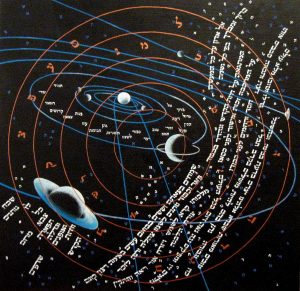
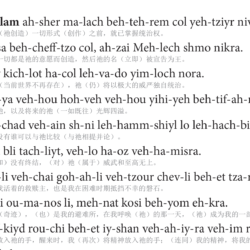

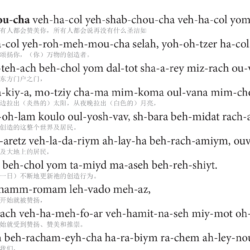
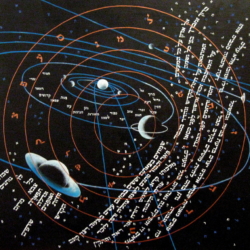
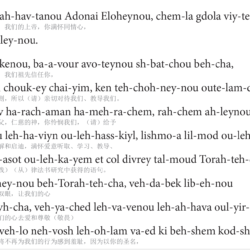


Leave a Reply